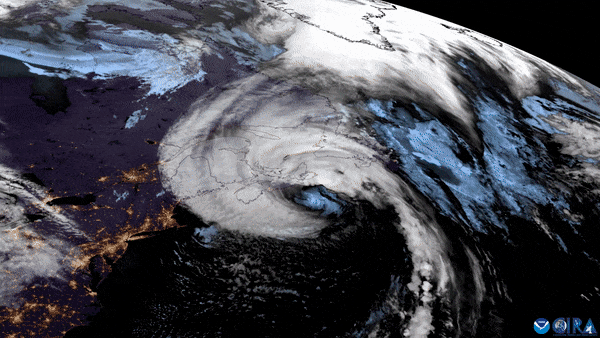

Key Headlines
- Historic Landfall Along Atlantic Canada: Fiona made landfall as a powerful post-tropical cyclone early Saturday morning, September 24, near Whitehead in Guysborough County, Nova Scotia. According to the Canadian Hurricane Centre (CHC), Fiona's central pressure at landfall was recorded at 931 millibars, setting the record for the lowest landfalling storm in Canadian history. Fiona was a very strong category-1 equivalent cyclone at the time of landfall, packing multiple gusts over 100 mph (160 km/h) according to local media reports. In addition to hurricane-force winds, Fiona brought heavy rainfall leading to widespread flooding and severe storm surge across much of Atlantic Canada.
- What is a Post-tropical Cyclone? As tropical cyclones move north in the mid-latitudes, they often undergo a process called extra-tropical transition, in which a tropical cyclone loses its tropical characteristics, changes shape and symmetry, and often grows in size. While Fiona underwent extra-tropical transition on Friday into Saturday prior to landfall, the storm maintained hurricane-force strength at the time of landfall.
- Widespread Impacts throughout Atlantic Canada: On Saturday morning, over 90 percent of Prince Edward Island customers were without power. Significant outages also occurred in Nova Scotia (80 percent of customers) and New Brunswick (28 percent of customers), altogether totaling more than 500,000 households without power in Atlantic Canada. Channel-Port aux Basques, a small town at the southwestern tip of Newfoundland, experienced severe storm surge that resulted in at least a dozen houses collapsing into the water. Local authorities across affected regions have communicated widespread impacts of downed power lines and fallen trees across affected areas. Current damage surveys are ongoing and will continue for the foreseeable future as conditions improve.
- The Future of Fiona: The National Hurricane Center issued its last update on Fiona on Saturday afternoon as all advisories were discontinued. Fiona will continue to weaken as its core moves offshore of Atlantic Canada. From there, Fiona is expected to fully dissipate over the next few days.



Additional links of interest:
Fiona Satellite Imagery from CIRA Colorado State
Canada Hurricane Centre
U.S. National Hurricane Center
PEI Storm Surge Warning System
PEI Weather Conditions
Nova Scotia Emergency Management Operations
Canada Tidal Gauge Network
This will serve as the final Live Event Report for Fiona. Guy Carpenter meteorologists will continue to monitor any material impacts to affected regions.